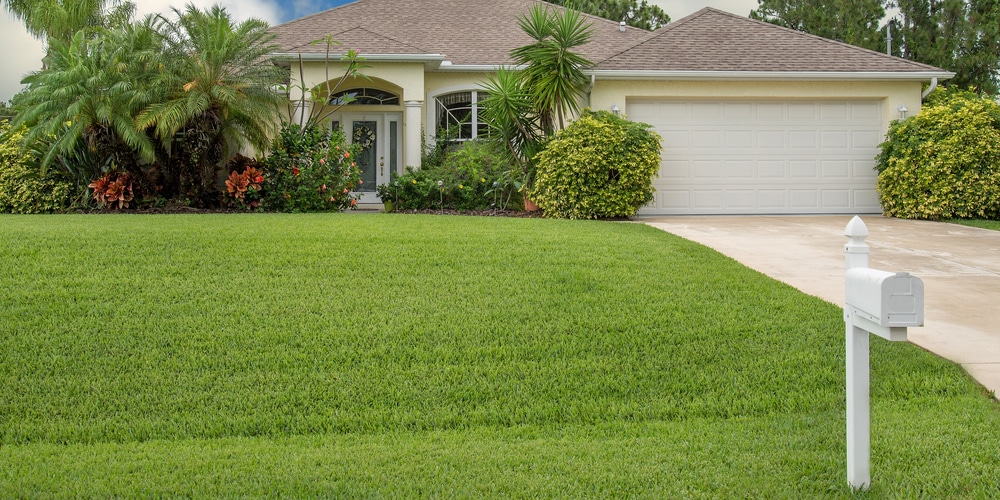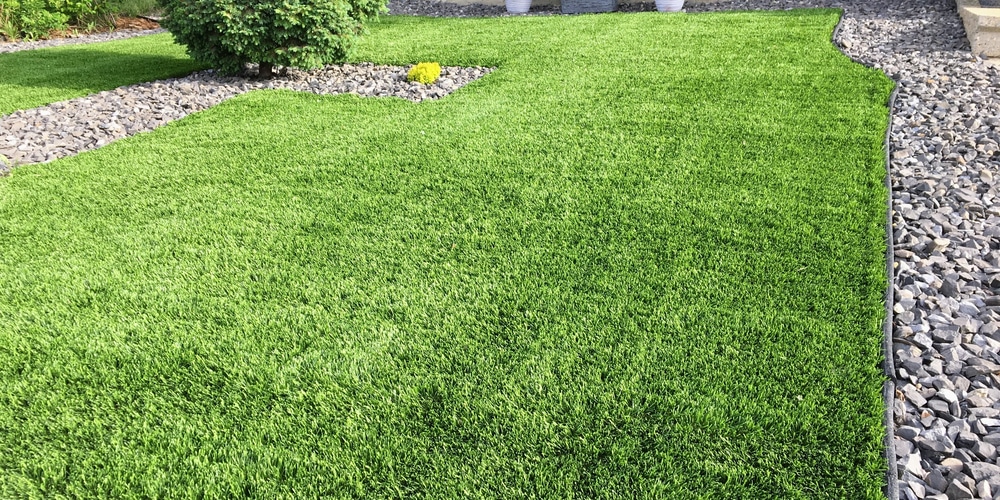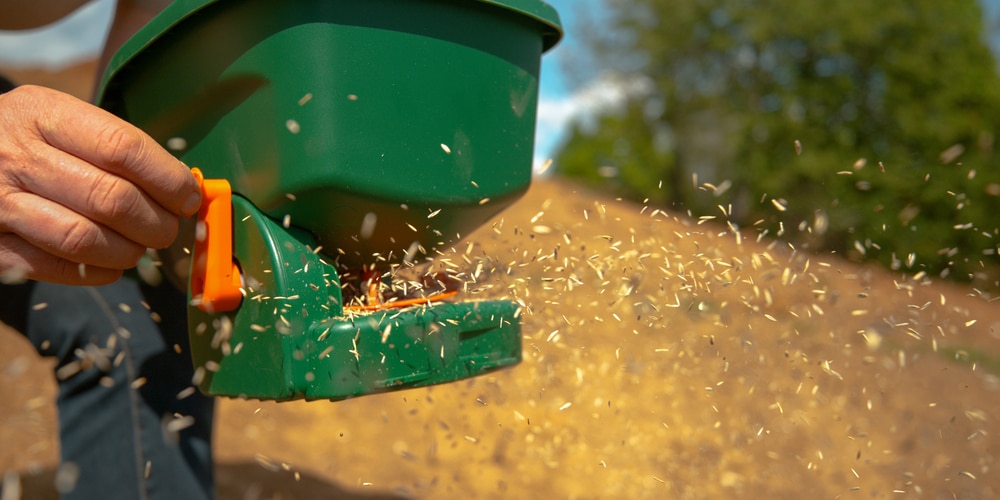It’s important that you prep your site correctly and use the right amount of seeds if you want the grass in your lawn to sprout perfectly and cover your yard evenly. The number of seeds you’ll need varies depending on the type of grass you wish to plant. However, you’ll typically need between two and eight pounds of grass seed for every 1000 sq. ft., depending on the seed’s quality and type. This article will answer the question, ‘how much grass seed do you need per 1000 feet?’
How Much Grass Seed Do You Need per 1000 feet

Several variables are up for consideration when seeding a new lawn. First, you have to choose a species of grass that’s suitable for your local climate and suitable for your needs. For instance, the fine fescue (Fescue spp.) has a low tolerance for traffic, while the Kentucky bluegrass has a high tolerance for traffic.
It would be best to think about the grass’s maintenance requirements and establishment rate. The fine fescue establishes at an average rate with low mowing requirements, while the Kentucky bluegrass establishes at a slower rate and has high mowing requirements. Next, you’ll need to look at the rate of application.
The application rate refers to the number of seeds you’ll need per area of land. For instance, you’ll need two or three pounds of Kentucky bluegrass seeds for each 1000 sq. ft. or four to five pounds of perennial ryegrass or fine fescue for a similar area size. You’ll need to calculate your lawn size to get the correct figures.
How about other species of grass? You’ll need about a half or one pound for colonial or creeping bentgrass, five pounds of hard fescue, four pounds of red fescue, ten pounds of tall fescue for each 1000 sq. ft. of lawn. If you don’t know how big your lawn is, then you’ll have to make the necessary calculations.
How to calculate your lawn’s size
Calculating your lawn’s size helps you accurately determine the required seed quantity, ensuring that you have enough seeds to cover your entire lawn. You’ll also be able to avoid buying more seeds than you need and save some cash in the process. So, how do you go about calculating your lawn’s size?
* Make an accurate diagram of your lawn. Use other geometric shapes like triangles and rectangles to make it cheaper to measure and calculate the area if your lawn doesn’t fall into a simple geometric shape, i.e., a rectangle.
* Measure each geometric shape as required in square feet. For instance, you should measure the sides of squares and triangles and the base and height of triangles (ensure that you hold the tape at a 90-degree angle when measuring a triangle’s height).
* Calculate the area covered by each measured section. You can calculate rectangular areas by multiplying the area’s length by its width. Areas covered by triangles are calculated by multiplying the base with the height and dividing the answer by two.
* Add all your answers together to get the total area covered by your lawn in square feet.
* Multiply the preferred grass species’ seeding rate, which is in pounds for every 1000 sq. ft., to determine the total amount of grass seeds you need. Grass seed bags often indicate the seeding rates on the label (Note: It varies depending on the species).
Lawn site preparation
You must prepare your lawn site to get the best results. For insurance, you’ll have to eliminate all the weeds in advance, remove all debris, and get a soil test. Your results will help guide you on what you’ll need to do to improve your soil’s nutrient deficiencies and pH.
You could add some compost, organic material, lime, or fertilizer to adjust the soil’s pH and make it better suited for your grass. Next, you’ll have to grade your lawn and fill any holes that could create an uneven lawn. Ensure that the lawn slopes slightly away from your or any other homes to redirect rainfall and prevent it from damaging property.
Often, the best time to seed your lawn is in early fall or late summer. Seeding your lawn during this period protects the seeds from too much heat or cold that prevents your seeds from germinating properly. Seed your lawn using a drop spreader for an even seed application.
This should be followed by adding starter fertilizer and pressing the seeds into the soil with a roller. Water your seeds regularly (depending on the season). Doing this ensures that the seeds are kept moist to improve germination rates.
Tips and seeding considerations
You’ll need to purchase the best seeds if you want the perfect lawn. Check your speed bag’s label to get the expected germination rates. Understand that lower quality seeds cost less; however, they also have low germination rates. Plus, you’ll need more of them to get similar results to high-quality seeds when seeding. High-quality seeds are more expensive; however, they have much higher germination rates.
You may need seeds with a higher seed rate if the temperatures are cooler than you anticipated or if you choose to seed later in the fall. Either way, the best thing to do is follow the instructions and apply the seeds as stated. Keep in mind that using too little or too many seeds could be problematic.
For instance, using fewer seeds could lead to a thin lawn, especially if you use low-quality seeds. Using too many seeds could create thick lawns that are more prone to diseases. Therefore, you should select a trustworthy company with good quality seeds that you are certain will germinate as desired.
If your lawn is too thin and poorly covered with grass due to improper seeding, you could still be overseed using high-quality seeds of the same grass species. Overseeding involves planting grass seeds directly into existing turf. Doing this could help you fill bare spots and salvage the lawn.
How Much Grass Seed Do You Need per 1000 feet: Conclusion
Various grass species have different seeding rates, which is the major factor (besides your lawn’s size) that determines how much grass seed you need for your lawn. You’ll need to consider all guidelines mentioned above before deciding on what type of seed you need and by how much.

